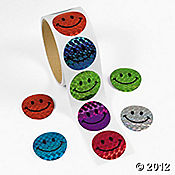The Core: Math
 This morning I sat in front of the Oriental Trading website. Giddy. Filling my basket with stickers and motivational gimmicks.
This morning I sat in front of the Oriental Trading website. Giddy. Filling my basket with stickers and motivational gimmicks.
I adore teaching tutoring. And soon . . . I will have some precious little munchkins for three hours every Tuesday.
Teaching them things like . . . math.
At times I don’t think that Classical Conversations can start soon enough. Is it normal to be this excited for learning? I pray it is contagious to those around me.
By the way, if you are new to our book club where we are discussion The Core, head on over to my Classical Education page to catch up!
Math Facts Cause Arguments
I’ll be honest. I have most of my math facts memorized; but there are times you will see my fingers move ever-so-slightly as I correct Asher’s math homework. I can’t let him see my deficiency over something so simple . . . a foundational component of education that I am constantly harping on him to commit to memory.
Math facts are the subject of which Asher and I argue about the most.
6 + 8 = 15
The Need to Understand Math Facts
I excelled in math (despite my finger counting) during my grade school years — that is, until geometry. I think it stumped my teacher, Mr. Livengood.
Leigh Bortins shed some light onto the reason my GPA never reached 4.0, largly due to the only D (that starkly stood out beside the A’s and B’s) I received my entire educational career.
. . . We need to slow down and understand math and how it works and why it seems like a foreign language . . . Once you know how to study math, just about any textbook will work just fine. We tend to blame our aversion to math on the teacher, the text, or an innate inability. As with most things we blame, they are not the real culprits. The real problem is that math, like a foreign language, uses unfamiliar symbols, sentence structures, and grammatical rules. So the best way to become fluent in math is to immerse yourself in its language. (Bortins 131)
Not only did I lack the grammar of geometry, but there was most likely a disconnect with one or more symbols and/or mathematical rules that I had not mastered.
If the preliminary symbols aren’t over-practiced to the point of being automatic, our minds come to a complete stop and refuse to progress any further in math until someone sorts out the confusion and helps us discover where we got lost. (Bortins 133)
Mr. Livengood spent hours repeating the same words again and again and again. But I felt he was speaking a foreign language. I simple did not comprehend this thing called geometry.
Area = pi × r2 or Area = (pi × d2)/4
Tips to Understanding Math Facts
The Core offers some great suggestions towards picking and using a quality curriculum to accomplish mastery:
- It needs to focus on repetition and drill, not entice children to look at the page via pretty pictures.
- A math curriculum is not where your child is to learn social values. Keep it math.
- A parent must refrain from being bound by the teacher’s manual. Work at your child’s pace. Who says you have to complete the entire lesson in one sitting? And who says you can only do the lesson once?
- Bortins never lets her students skip problems. She may complete the even problems with her child but firmly believes that there is “no such thing as too much math practice. “ (Bortins 139)
How Do I Know I Taught Math Well?
Your child will be able to explain the math problem to you in words and on paper. If your child can not explain how they arrived at their answer, then your child does not have mastery over the math fact.

What if My Child Seems Stuck?
I was stuck. Lost in a web of angles and shapes. Looking back, I see that I just needed to backtrack a wee bit.
When a student is just stuck and can’t see his way through to understanding a concept, it is usually because something simpler is being overlooked or hasn’t been mastered. Developing a core of grammar prepares the student to compare thoughts and think dialectically. (Bortins 142)
There is nothing wrong with reviewing or re-teaching a concept. Repetition breeds competency. Mastery.
Like Bortins’ son, William, I am fond of words. Word come easy but numbers swim aimlessly in my brain, searching for the ladder of knowledge. Knowing this, being the industrious mom, Bortins’ “tackled math as verbally as possible for him so that he can use the tools he knows well – word and definition analysis – to apply to what he doesn’t know so well, mathematical patterns.” (Bortins 145)

How Long Will this whole Mastery Thing Take?
Years my friend. But your journey need not be a lonely one. Be a part of a community.
It takes years of seeing the same thing used in different ways before it can be mastered. (Bortins 146)
What Math Do We Use?
- Teaching Textbooks – Asher
- Saxon Math 1 — Ezra
- Math-U-See Primer – Gabe

This is the area I have done the most thinking about after having read The Core…. we are making the switch to Saxon and we are drilling math facts now before “school” starts. So much of what she said just made perfect sense to me. So glad I read this book!
MathUsee or Saxon? I wasn’t sure which one to use for our first grader (we just began our homeschooling journey). I purchased The Core a couple of months ago and haven’t had tinge to read beyond p.45! Wish I would have because I found myself pressed for time and bought “Alpha” from Math U See not realizing I should have (could have) gone with Saxon! I’ve never used either. Will Math U See do the job in your opinion since it sounds like you’ve used this curriculum? Am I over thinking it!
I honestly haven’t looked at Math U See for first grade. I adore Saxon for first grade BUT if this is your first year homeschooling, Math U See will probably be a GREAT curriculum to start with. I have been enjoying using it with my pre-k guy. We are using the Primer. Start out . . . the one thing you need to remember and give yourself grace in when it comes to homeschooling — allow yourself to change midyear. You have to teach what is best for your kiddo! And DOOOO finish the Core. It lays a wonderful foundation!